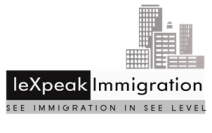Revalidation is a Privilege, not a Right
Please see the final (revised) regulations at http://travel.state.gov/visa/laws/telegrams/telegrams_1441.html
What is this Automatic Visa Revalidation?
The name itself indicates that there is a visa which is invalidated or not valid and which is going to be revalidated automatically (of course on some event).
Department of State (DOS) regulations permit certain non-immigrants to re-enter the United States after a 30-day or less visit to Canada or Mexico without having to obtain a new visa prior to re-entry. This is called automatic visa revalidation.
To start, Visa revalidation was originally instituted to recognize the legally and frequently traveling people to US from Canada, Mexico, and certain adjacent islands for short business and pleasure trips. Though not impossible, it would definitely be difficult to require these individuals to return to their home countries after the departure to apply for a visa to reenter the U.S. Gradually, many started using the automatic revalidation process for convenience by seeking to apply for the visa in Canada or Mexico, instead of traveling all the way to their home countries.
What is the Limitations on Visa Revalidation?
Visa cannot be automatically revalidated for two classes of applicants seeking reentry to the U.S. from a contiguous territory.
1. If the person chooses to apply for a visa at the consulate in that contiguous territory.
2. For nationals of countries considered to be state sponsors of terrorism, if they travel abroad, regardless of whether or not these nationals apply for a visa abroad
Below guidelines apply to H-1B workers whether they entered the U.S. as H-1B or later changed status to H-1B. You may reenter the U.S. from Canada or Mexico without a valid visa if you:
• Are not citizens of Iran, Syria, Libya, Sudan, North Korea or Cuba, or other country designated as a terrorist country by the Department of State.[1]
• Your stay in Canada or Mexico was for less than 30 days.
• You maintained your H-1B nonimmigrant status when last in the U.S. and intend to resume your H-1B activity upon reentry.
• You apply for readmission within your initial admission or extension of stay (i.e., not after your approval has expired.)
• Your visa was not cancelled or otherwise not declared inadmissible to the U.S. under Section 212(a) or 212(d)(3)(A) of the Immigration and Nationality Act (INA).[2]
• You did NOT apply for a new visa in Mexico or Canada during your visit.
If you apply for a new U.S. visa while in one of these countries, you must wait for a decision before being eligible to reenter the U.S. Individuals subject to security or technology checks (performed as part of the visa application process) may experience delays of 30 additional business days or more, while the visa application is being reviewed. If the visa application is denied, you cannot reenter the U.S. until you obtain a new entry visa from the U.S. Consulate or Embassy in your home country. That is, if denied, you must travel to your home country for a new visa in order to reenter the U.S.
When reentering the U.S. from Canada or Mexico using automatic visa revalidation, the minimum required documentation you must present is:
• Form I-94. DO NOT SURRENDER YOUR VALID FORM I-94 TO IMMIGRATION OFFICIALS UPON DEPARTURE FROM THE UNITED STATES.
• Valid passport
• Original Form I-797 H-1B Approval Notice
• ID badge
• A current letter of employment explaining that you are currently employed in the same position as described in the H-1B and that you must enter the U.S. to continue that employment (can request such letter from your HR)
• Copy of Labor Condition Application (LCA)
Note: Automatic revalidation is not valid to travel from a contiguous territory (ex: Canada) to a non-contiguous country (ex: Germany) and return to the U.S. via a contiguous territory. The use of automatic revalidation to enter the US after travel to a third country is a violation of immigration laws that may lead to deportation.
Islands defined as “adjacent islands”
Saint Pierre
Miquelon
The Dominican Republic
Haiti
Bermuda
The Bahamas
Barbados
Jamaica
The Windward and Leeward Islands
Trinidad
Martinique
Other British, French, and Netherlands territory or possessions in or bordering on the Caribbean Sea
[1] See http://www.state.gov/s/ct/
[2] Note: Do not confuse 212(a) with 212(e). Automatic revalidation applies even if you are subject to 212(e).

No comments:
Post a Comment